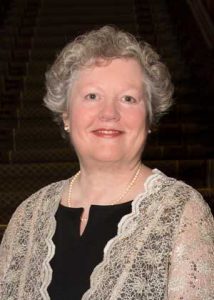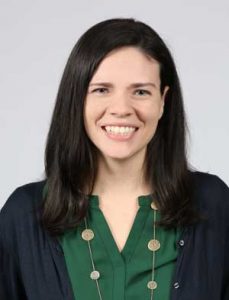Psychologists find inpatient autism treatment complex, challenging

Barbara Tylenda, Ph.D, ABPP, chief psychologist to Bradley Hospital’s Center for Autism and Developmental Disabilities (CADD)
Growing awareness, mandatory early screening and changes to the diagnostic criteria have collectively contributed to an increase in the number of autism diagnoses. For the most part, patients with a diagnosis on the autism spectrum are managed on an outpatient basis. But, in some cases, hospitalization is necessary.
Barbara Tylenda, Ph.D, ABPP, chief psychologist to Bradley Hospital’s Center for Autism and Developmental Disabilities (CADD), said that individuals with autism who need hospitalization are “…just like their neurotypical counterparts…” but can no longer be home or in school because of aggressive, self-injurious, or some other maladjusted behavior.
Tylenda is also a clinical professor in the department of psychiatry and human behavior (DPHB), division of biology and medicine at Brown University’s Warren Alpert Medical School.
While the general public has become better educated about autism spectrum disorder (ASD) and intellectual disabilities, it is still not aware of the “…other half of the picture,” which is neurological development, according to Tylenda.
These children have four to six times the amount of psychiatric diagnoses than the neurotypical population and also high rates of medical complications.
“These are the most complicated kids,” she said.
Upon admission, the child undergoes a four-step process that begins with assessment. After determining a formal diagnosis, the multidisciplinary team develops an appropriate intervention that changes when necessary.
Tylenda pointed out that the multidisciplinary team that treats these children must have good knowledge of child psychopathology and be able to tease out the specific reason for hospitalization.
She noted that a behavioral issue could be related to a co-existing problem.
“The development has gone awry,” she said. “There are lots of differential diagnoses.”
According to Tylenda, treatment comprises many different parts and may include medication management, occupational and physical therapy, medical/nursing care, and general behavioral intervention strategies.
Higher functioning patients may engage in group therapy, she added.
When stabilization is achieved, the team prepares for discharge by determining whether the child should enter a step-down program, receive home care, outpatient services or some other intervention.
Tylenda explained that Bradley Hospital works closely with Spring Harbor and other programs that began as satellites.
Bradley’s program attracts patients from several states because of the dearth of quality nation-wide programs.
Cathleen J. Small, Ph.D, BCBA-D, director of behavioral services and Spring Harbor Academy, Autism and Developmental Disorders Service at Spring Harbor Hospital in Westbrook, Maine, reported that the developmental disorders program at the facility typically admits between 70 and 80 patients per year, not to be treated for autism or intellectual disabilities, but rather for behaviors that make living at home unsafe.
Some patients also have symptoms related to comorbid conditions, such as anxiety or obsessive-compulsive disorder (OCD).
Spring Harbor operates with a multi-disciplinary team of specialists, including psychiatrists, psychologists, behavior analysts, speech and language therapists, social workers, occupational therapists and special educators.
This team meets daily for data review to understand the nature of challenging behaviors and collaborates to develop a positive behavior support plan, Small said.
Spring Harbor uses Applied Behavior Analysis (ABA) and treatments based on its principles, according to Small.
Parents are paramount to successful treatment and are encouraged to become actively involved, Small said.
Parental information about the child’s strengths and preferences helps the team prior to admission and during hospitalization as it sets goals and identifies the most appropriate intervention.
During the child’s inpatient stay, program staff trains the parents to implement positive behavior support, focused on prevention and teaching new skills and reinforcement strategies.
After shadowing staff, parents actively participate in implementing the plan with coaching and support from staff.
Not all patients live with parents, so Spring Harbor provides the same training to other caregivers, including teachers, foster parents, and staff at residential homes.
Small noted that across the United States, there are currently 13 specialized inpatient units for children with Autism Spectrum Disorder and other developmental disorders.
“This … is great news as we move toward meeting the critical needs of this underserved population,” she said.

Lauren Herlihy, Ph.D, clinical psychologist on the Autism Inpatient Unit at the Hospital for Special Care
The Hospital for Special Care in New Britain, Connecticut, admits patients between the ages of 10 and 21, although some children as young as five have been hospitalized, said Lauren Herlihy, Ph.D, clinical psychologist on the Autism Inpatient Unit at the Hospital for Special Care.
Teens entering a transition point in their lives comprise the majority of patients.
She said that the main reason for hospitalization is self-injury, such as head banging, biting oneself or “majorly destructive behavior to the point of being unsafe at reduced levels of care.”
The Hospital for Special Care’s inpatient autism team comprises multiple disciplines including a medical director, board certified child and adolescent psychiatrist, board certified behavior analyst, social worker, master’s level nurse clinical coordinator, developmental pediatrician, speech and language specialist, occupational therapist and recreational therapist.
Treatment options include cognitive behavioral therapy when appropriate as well as ABA, which is the gold standard and the only evidence-based treatment for autism to reduce problem behavior and increase adaptive skills, Herlihy explained.
At 28 days, the average length of stay at the Hospital for Special Care is below the national average for units of this type, Herlihy added. But discharge depends on a “quantitative reduction in problem behavior,” she said.
The hospital admits 115 patients on average, who hail from across the country, annually to its 10-bed unit.
Wendy DeAngelo, MBA, vice president of development and communications at the Hospital for Special Care, quoted state officials who indicate that the state is facing a crisis with too many children waiting in the emergency room.
To address this overwhelming need, the Hospital for Special Care is in the process of expanding the inpatient unit to 12 beds and is planning a partial hospital program “to bridge the gap between outpatient and inpatient,” DeAngelo said.
DeAngelo said that the Hospital for Special Care’s inpatient unit is the only one of its kind in Connecticut and its outpatient center has been designated by the National Committee for Quality Assurance (NCQA) as a level 3 patient Centered Specialty Practice.
Phyllis Hanlon has been a regular contributor to New England Psychologist since 1999. As an independent journalist, she has also written for a variety of traditional and alternative health magazines and business consumer and trade publications. She also serves as writer/editor for custom publications.
